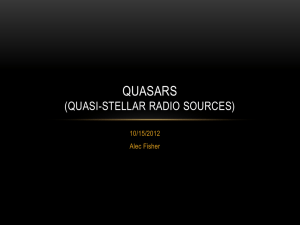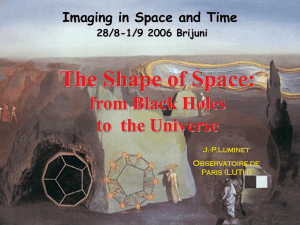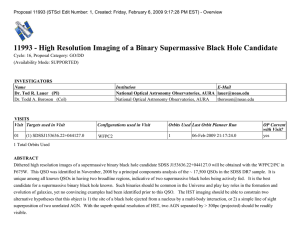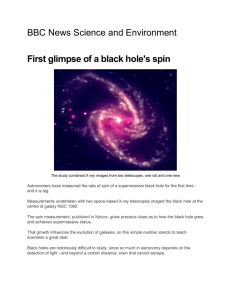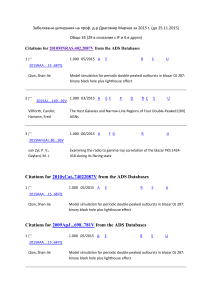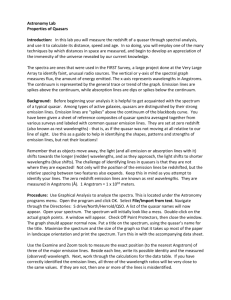Media Release
advertisement
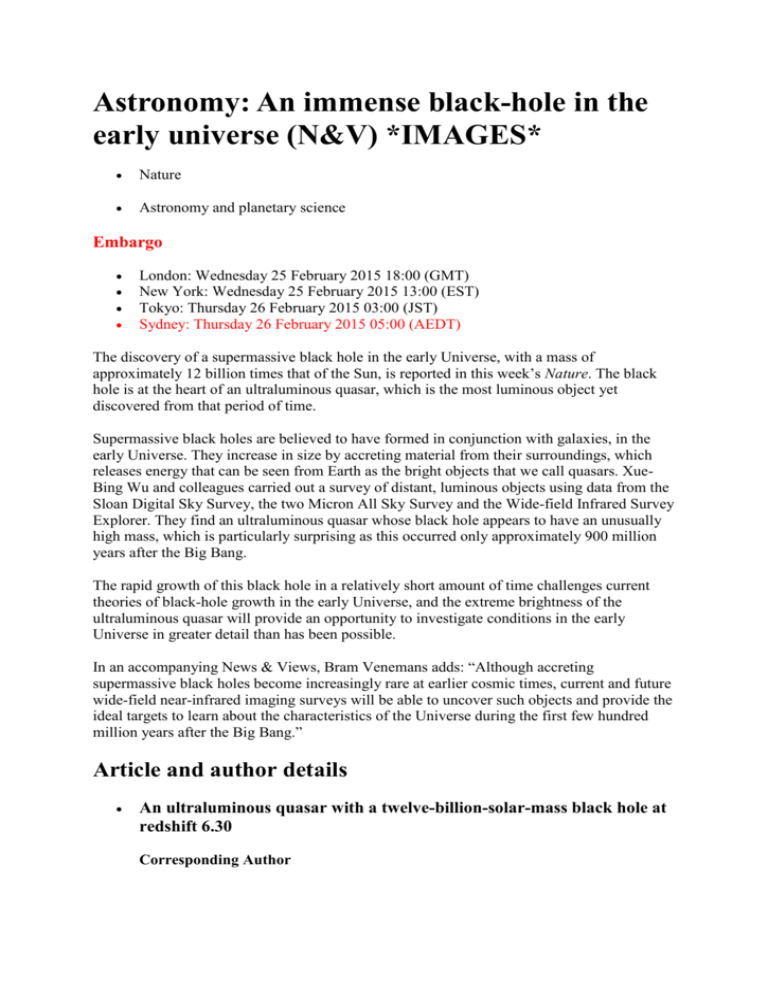
Astronomy: An immense black-hole in the early universe (N&V) *IMAGES* Nature Astronomy and planetary science Embargo London: Wednesday 25 February 2015 18:00 (GMT) New York: Wednesday 25 February 2015 13:00 (EST) Tokyo: Thursday 26 February 2015 03:00 (JST) Sydney: Thursday 26 February 2015 05:00 (AEDT) The discovery of a supermassive black hole in the early Universe, with a mass of approximately 12 billion times that of the Sun, is reported in this week’s Nature. The black hole is at the heart of an ultraluminous quasar, which is the most luminous object yet discovered from that period of time. Supermassive black holes are believed to have formed in conjunction with galaxies, in the early Universe. They increase in size by accreting material from their surroundings, which releases energy that can be seen from Earth as the bright objects that we call quasars. XueBing Wu and colleagues carried out a survey of distant, luminous objects using data from the Sloan Digital Sky Survey, the two Micron All Sky Survey and the Wide-field Infrared Survey Explorer. They find an ultraluminous quasar whose black hole appears to have an unusually high mass, which is particularly surprising as this occurred only approximately 900 million years after the Big Bang. The rapid growth of this black hole in a relatively short amount of time challenges current theories of black-hole growth in the early Universe, and the extreme brightness of the ultraluminous quasar will provide an opportunity to investigate conditions in the early Universe in greater detail than has been possible. In an accompanying News & Views, Bram Venemans adds: “Although accreting supermassive black holes become increasingly rare at earlier cosmic times, current and future wide-field near-infrared imaging surveys will be able to uncover such objects and provide the ideal targets to learn about the characteristics of the Universe during the first few hundred million years after the Big Bang.” Article and author details An ultraluminous quasar with a twelve-billion-solar-mass black hole at redshift 6.30 Corresponding Author Xue-Bing Wu (Peking University, Beijing, China) Email: wuxb@pku.edu.cn, Tel: +86 106 276 5998 News & Views Author Bram Venemans (Max Planck Institute for Astronomy, Heidelberg, Germany) Email: venemans@mpia-hd.mpg.de, Tel: +49 6221 528417 DOI 10.1038/nature14241 Online paper* http://dx.doi.org/10.1038/nature14241 * Please link to the article in online versions of your report (the URL will go live after the embargo ends). Images Image 1 Caption: An artist’s image of a quasar with a supermassive black hole in the distant Universe. Credit: Zhaoyu Li (Shanghai Astronomical Observatory) Downloads: Low resolution (832.39 KB) or High resolution (2.21 MB) Image 2 Caption: The newly discovered quasar SDSS J0100+2802 is the one with the most massive black hole and the highest luminosity among all known distant quasars. Credit: Zhaoyu Li (Shanghai Astronomical Observatory). The background image is provided by Yunnan Observatories Downloads: Low resolution (1.30 MB) or High resolution (2.86 MB)





